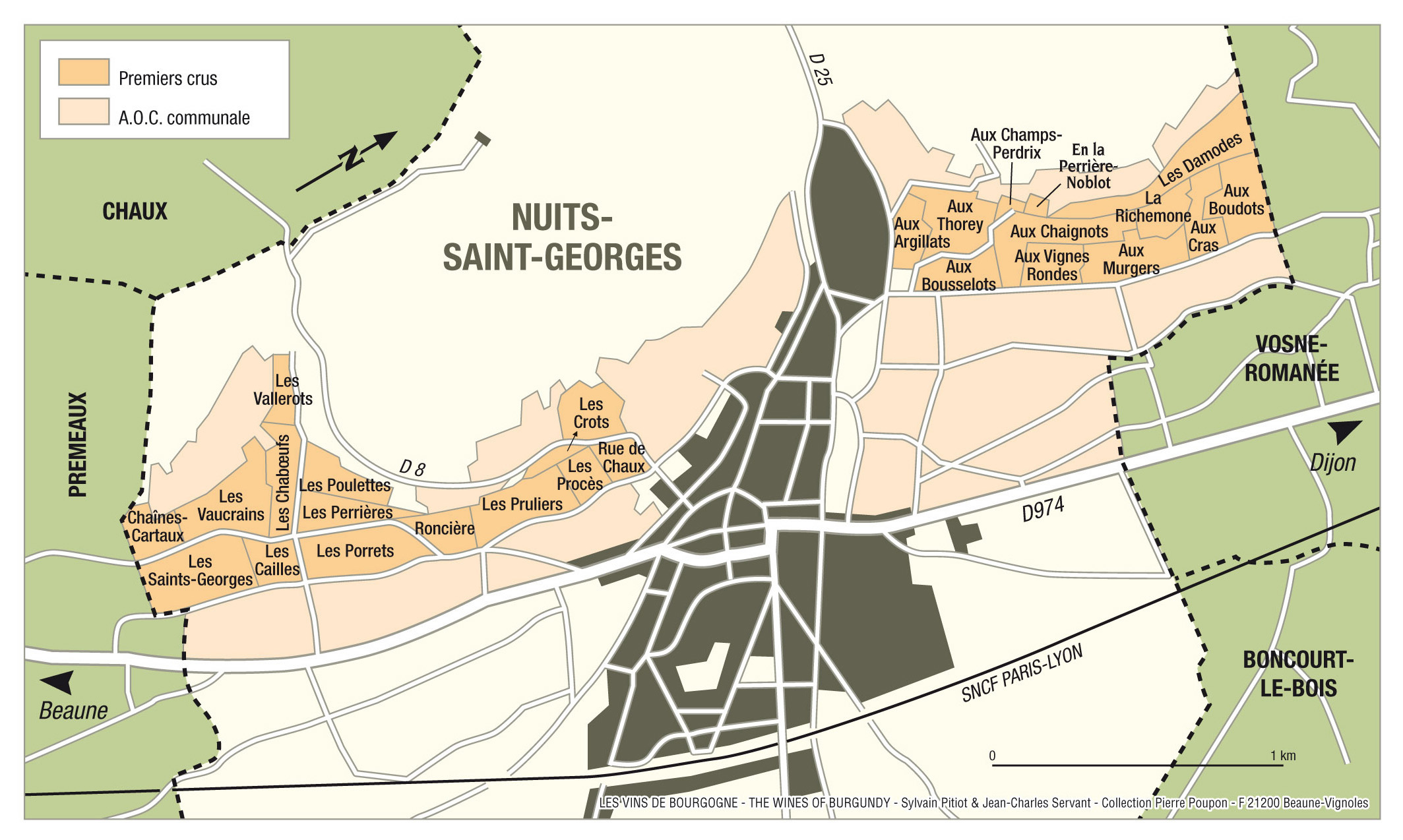Nuits-St-Georges
“Round, Generous, Tannic”
Poor Nuits-St-Georges. In a gentrifying neighborhood, it’s the humble, old working-class house next door to blingy Vosne-Romanée, where limos are pulling up 24/7, and the pool party never seems to end. Vosne-Romanée has a riot of Grand Crus, while Nuits-St-Georges has none. Vosne-Romanée has aristocrats, while Nuits-St-Georges has workers - all the more reason to love it.
The style here is defiantly rustic. The wines are not polished or slick and rarely worry about trying to please. Rather, they’re earthy and soulful and a little suspicious - they will take some time to come around. But when they do, they’re immensely satisfying and affordable.
In the absence of Grand Crus, Nuit-St-Georges has twenty-seven Premier Crus. In contrast to, say, Chambolle, which is a tight little square, Nuits-St-Georges is a very long expanse with the village itself tucked into the center of the appellation. This length provides the wines a distinct range of character. There’s not just one wine here, but two distinct options. The first is on the north end of the villlage, where it borders Vosne-Romanée with terrain generally of limestone and marl underneath a surface layer of smaller pebbles. Here, Nuits-St-Georges vineyards like Boudots and Chaignots give wines that possess clear shades of Vosne. The second choice is from the vineyards south of the village, like Vaucrains and Les Saint-George, where Nuits-St-Georges borders on Prémaux, with a heavier, craggier topography. Vineyards end here close to the big quarry of Prémaux until they pick up again at Beaune.
Tasting Notes
Because Nuits-St-Georges covers such a large span of area, it’s important to distinguish between the northern and southern ends of the region. To illustrate the key differences, the wines of Robert Chevillon provide good instruction. Chevillon, a wonderfully classic producer, possesses both Premier Crus Chaignots and Vaucrains, which make for a good comparison, as they are on similar elevations. On finer-grained soils, the former wine possesses some of the elegance, as its polished tannins are tightly interwoven into the wine’s larger fabric. It’s burlier than most Vosne-Romanée, but the tight-knit integration is palpable. On the other side of the village, Vaucrains is muscular and coarse, with larger, jagged tannins that need time to come around. The ground here is quite rocky, rendering a wine that’s fairly wild.
top producers
Gregory Gouges, winemaker
domaine henri gouges
Probably the most famous name in Nuits-St-Georges, the Gouges family has farmed grapes here for centuries. They were one of the first grape growers to create a domaine and bottle their own wines (in 1919). The style is true to the character of the village: direct, stalwart, tough in youth, built to flower in age. But there’s also lots of pleasure here, as the wines have earthy intensity and blossom over time.
Yannick Champ, winemaker
Domaine prieurÉ roch
Given that the Roch family is part owner of DRC, this domaine has some celebrity appeal. However, despite some glitzy holdings in other villages (e.g., Clos de Vougeot, Chambertin-Clos-de-Bèze) some of its heart lites in Nuits-St-Georges, where crus like Clos des Argillières and Clos des Corvées form the soulful bedrock of the portfolio. The vines here are farmed biodynamically and the wines are made with only a bare minimum of sulfur, making this domaine a darling of the natural wine movement. The wines are idiosyncratic, characterized by fresh, chewy fruit and a certain rawness that belies the typical polish of Burgundy.
Bertrand Chevillon, winemaker
domaine robert chevillon
Chevillon is discussed above, but ranks with Gouges as a quintessential Nuits producer, making somewhat rustic wines that haven’t changed much over the decades. The style is pure and direct, focusing on getting the raw material from the grapes into the bottle. Like Gouges, this may mean a minimum of processing and therefore somewhat stodgy wines in youth, but over a decade or more they blossom into gorgeous, full throttle Burgundies.
Detailed map
Source: Rajat Parr, The sommelier’s atlas of taste (2018); https://www.bougogne-wines.com



